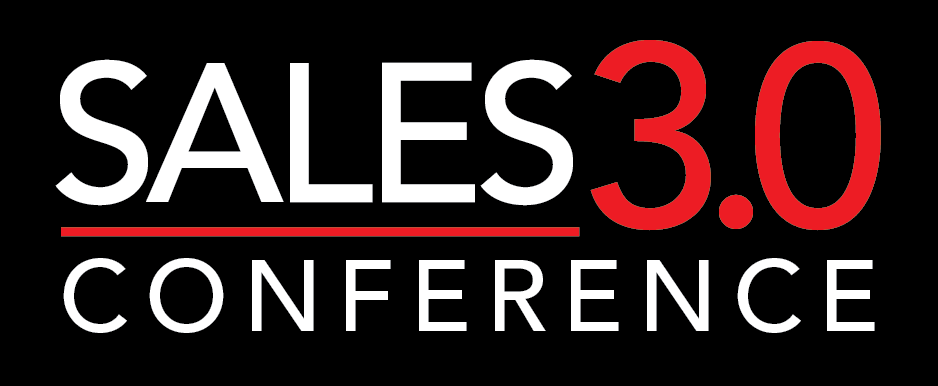“How can I get more women to join my sales team?”
This question was asked by one of the hundreds of B2B sales leaders in attendance at the Sales 3.0 Conference in Chicago on June 18. I was a panelist onstage (along with Jillian Blackwell, Microsoft consultant services executive to the Department of Defense and U.S. Navy). Our discussion, “Beyond Lip Service: Attracting Women in Sales with Policies That (Really) Support Their Success,” was being moderated by Cynthia Barnes, founder and CEO of the National Association of Women Sales Professionals (NAWSP).
What Attracts Women to Sales?
It’s a good question, and one a lot of sales leaders are asking these days. Personally, I started in sales when I was eight years old. Imagine a child – dressed in her purple church dress, black patent leather shoes, and ruffled white socks – knocking on doors and demonstrating the miraculous ZIF Spray cleanser (manufactured by Bestline) using a piece of carpet on a clipboard and a crayon. Like magic, the stain would disappear. My father was quite the sales strategist: He would drop me off in the “rich” side of the neighborhood, and send me back two weeks later with a different product to sell.
Despite this, I never dreamed of being a salesperson. In fact, I don’t know too many little girls who have said, “I want to be a salesperson when I grow up!” Maybe that has something to do with perception. Let’s face it: When we imagine a seller, we generally imagine a man who wears a suit and carries a briefcase. Or we think of the used car salesman. (I’ve never heard of a “used car saleswoman,” have you?)
What’s It Really Like to Be a Woman in Sales?
At the same time, I was raised to be and do whatever I put my mind to. As far as gender equality, I never felt discriminated against or thought sales positions were only for men. My first job out of college was a customer service representative for a B2B computer supplies company, which quickly led to sales and sales leadership positions. Our sales force was 100 percent women; together, we grew the company to $100 million and gained the attention of many competitors.
I didn’t realize that sales in general, or the industry I was in, was male dominated until a large corporation purchased that company. Then I felt the inequity – the need to work longer, harder, and smarter than my male counterparts, to earn their respect and receive equal pay and equal opportunity. I was often the only female sales leader in the room.
The question asked at the Sales 3.0 Conference makes sense, because the sales profession continues to be dominated by men. This is particularly true at the executive level. According to CEB, now Gartner, women hold just one in five sales leadership positions and only one in four midlevel sales manager roles. The percentage of women in frontline sales management has remained flat for more than 10 years. A few years ago, LinkedIn examined its own data and found 21 percent of all sales vice presidents on its site are women.
Are Women or Men Better at Selling?
Data suggests women are very good at selling. Gartner says women’s average quota attainment is 70 percent, while men’s is 67 percent. And, according to the results of the 2013 Xactly Insights Gender Study of Sales, women in sales achieve higher quotas and usually remain in their roles longer; and companies with gender parity see above-average revenue, market share, and profitability. I also know of at least one study, from Gong.io, based on data related to more than 30,000 sales calls, showing women are more successful at closing deals than men.
At the Sales 3.0 Conference, we had a lively discussion about how sales leaders can launch initiatives and create policies to attract, hire, and retain top female sales talent. Here’s what we revealed.
#1: Make sure your sales culture is female friendly.
What do your company’s brand and image represent? Think about it: Does your culture welcome diversity, inclusion, and change? If not, you may need a concerted effort with actionable measures to rebrand or change your culture to attract female talent. Ask women to provide input as you write job descriptions and create hiring profiles.
#2: Review your hiring and interview processes and policies.
Smart, savvy, skilled female saleswomen are highly competitive and a sought-after group. As Cynthia Barnes pointed out during our discussion, 78 percent of the Fortune 500 have initiatives to attract more women to sales, which means there is fierce hiring competition. You must set goals and commit to finding, interviewing, and hiring women.
During the interview process, eliminate your personal frame of reference or stereotypes that could cloud your judgment or narrow your vision for women in sales. Interview the candidate for job skills, not gender.
To find female candidates for your open sales positions, contact professional associations such as NAWSP’s job board, or create a partnership with top schools with specialized sales programs.
#3: Take steps to retain your women sellers.
After you hire women, make sure you have a strategy in place to retain them. Provide growth opportunities and invest in their success. One way to do this is to promote women to sales executive and leadership positions.
Having more women in leadership roles will help you attract more women in entry-level positions. Gartner Inc. found that, on average, female-led sales teams are 50 percent female, while male-led teams are only 25 percent female. As Jillian pointed out at the Sales 3.0 Conference, people want to see other people who look like them when they go to a job interview.
All highly successful people have mentors. Implement mentorship or mastermind programs specifically designed to address the concerns, needs, and preferences of women.
Make sure your company policies, programs, and initiatives appeal to and support women. Onsite daycare can help support the productivity of your women sellers who have young children. Flex time can help the women on your sales team manage their schedules more effectively, in ways that suit them. When it comes to planning team-building activities or offsite events, consider activities other than golf, hunting, or cigar-and-whiskey tastings. Try a wine-and-cheese event instead of happy hour at a sports bar. Invite spouses and children to join you at conferences or sales kickoffs, and sponsor activities the entire family can engage in and enjoy.
#4: Have a sexual harassment policy.
Many sales leaders leave policies like this to HR. But having a clear sexual harassment policy in place is key to creating an environment and culture that supports women in sales and sales leadership positions.
Make sure that policy addresses the issue of sexual harassment that comes from people outside the company – that is, customers and prospects. According to Cynthia, around 57 percent of the members of The National Association of Women Sales Professionals report having been harassed by customers or prospects. Even more disturbing, only 26 percent of those women felt empowered to speak up about such experiences.
If the women on your team fear ramifications if they speak out about harassment from customers or internal associates, they won’t last long at your company. Make sure you have a policy protecting your sellers, both male and female, from harassment by people inside and outside your company.
If you are serious about closing the gap for women in sales, then creating new systems and policies is essential. With sales constantly evolving, embracing different perspectives with gender diversity can only advance your company.

Krista Moore is president and CEO of K.Coaching Inc. and author of Race to Amazing: Your Fast Track to Sales Leadership.




